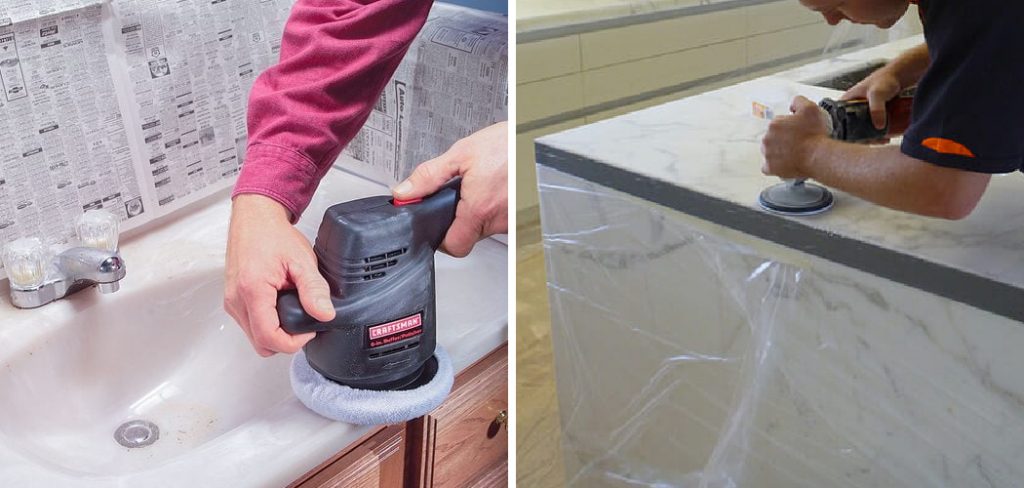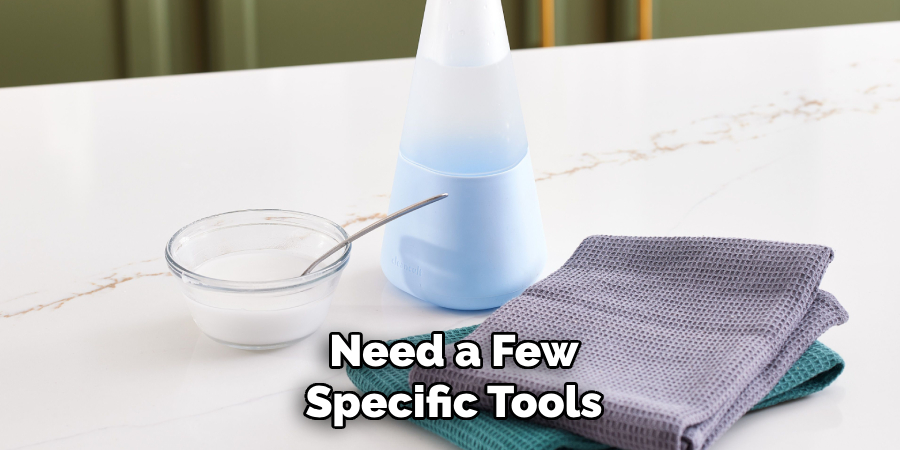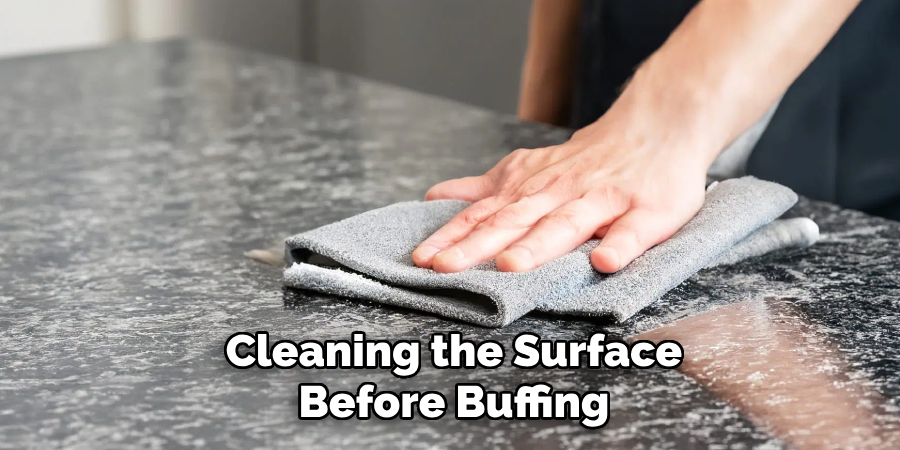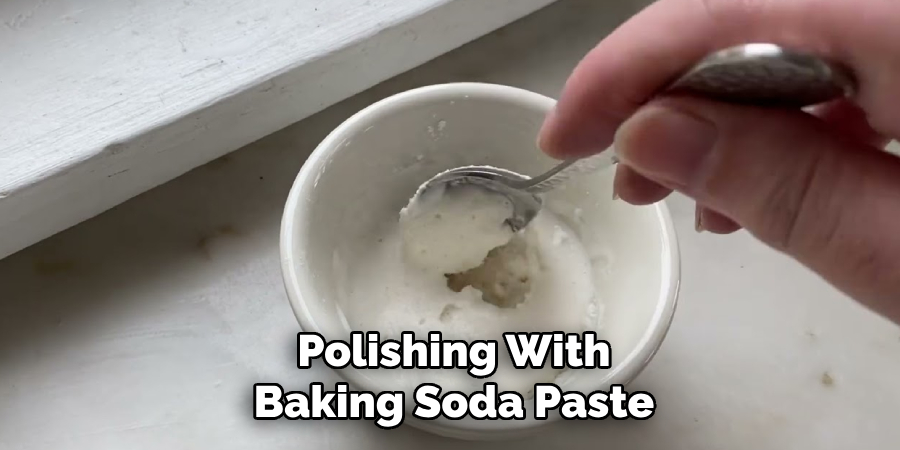Marble countertops are a stunning addition to any home, but over time, they can lose their natural luster due to scratches, stains, or daily wear and tear. Buffing your marble countertops is a simple yet effective way to restore their shine and maintain their luxurious appearance. Understanding how to buff marble countertops can help in maintaining it properly and troubleshooting common issues that may arise over time. With the right tools and techniques, you can bring your countertops back to life and ensure they remain a standout feature in your space.

The Beauty and Luxury of Marble Countertops
Marble countertops are renowned for their timeless elegance and unparalleled beauty. The unique veining patterns and natural color variations found in marble make each countertop a one-of-a-kind masterpiece. They exude a sense of luxury and sophistication that complements both traditional and modern home designs. Beyond their aesthetic appeal, marble also offers a cool, smooth surface, making it an ideal choice for baking enthusiasts and those who work with delicate ingredients. Whether featured in kitchens or bathrooms, marble countertops elevate the ambiance of any space, adding a touch of opulence that few other materials can match.
The Benefits of Buffing to Restore Brilliance
Buffing marble countertops is an essential practice to preserve their radiant and luxurious appearance. Over time, even with regular care, marble surfaces can accumulate minor scratches, dull spots, and residue that diminish their natural shine. Buffing helps to remove these imperfections, restoring the smooth, reflective surface that enhances the material’s beauty. Additionally, the process can help extend the life of your countertops by protecting them from further wear and tear. A well-buffed countertop not only looks brand new but also repels stains and debris more effectively, ensuring easier maintenance in the long run. By investing time in buffing, you can ensure your marble counters maintain their timeless charm and complement your home for years to come.
Tools and Materials Needed
To properly buff your marble countertops, you’ll need a few specific tools and materials to ensure the best results. Here’s what you’ll require:

- Microfiber Cloths: Soft, non-abrasive cloths are essential for cleaning and polishing without scratching the marble surface.
- Marble Cleaner or pH-Neutral Cleaner: A mild, specially-formulated cleaner helps to remove dirt, grease, and residue without damaging the stone.
- Polishing Compound: Designed for marble, this compound helps restore luster and eliminate minor scratches.
- Soft Buffing Pad: For a more efficient and even finish, a buffing pad (manual or attached to a buffer) works wonders.
- Spray Bottle with Water: Lightly misting the surface aids in distributing the polishing compound evenly.
- Protective Gloves: Wear gloves to keep your hands clean and protect them from prolonged exposure to cleaning agents.
- Marble Sealant (Optional): After buffing, applying a sealant can provide added protection and prolong the life of your countertops.
Having these tools and materials on hand will ensure that you can effectively buff and maintain your marble countertops, keeping them in pristine condition for years to come.
10 Methods How to Buff Marble Countertops
1. Cleaning the Surface Before Buffing

Before beginning the buffing process, thoroughly clean the marble countertop. Use a mild dish soap mixed with warm water and wipe the surface with a soft microfiber cloth. Avoid using acidic or abrasive cleaners like vinegar or bleach, as these can etch the marble. Rinse the surface with clean water and dry it completely to remove any residue that could interfere with buffing.
2. Using a Soft Buffing Cloth
For minor dullness, buffing with a soft cloth may be enough to restore the marble’s shine. Use a chamois or microfiber cloth to rub the surface in circular motions. Apply gentle but consistent pressure to bring out the natural luster of the stone. This method is ideal for routine maintenance and can be done regularly to keep the countertop looking polished.
3. Applying Marble Polishing Powder
Marble polishing powder is an effective solution for restoring shine to slightly worn countertops. Choose a high-quality polishing powder that is specifically designed for marble. Dampen the surface slightly and sprinkle a small amount of powder onto the countertop. Use a buffing pad or soft cloth to rub the powder into the marble in circular motions. Continue buffing until the desired shine is achieved, then wipe away any excess powder with a damp cloth.
4. Using a Buffing Pad with a Drill or Polisher
For more extensive buffing, use a buffing pad attached to a drill or an orbital polisher. Apply a marble polishing compound or a small amount of water to the surface and move the buffing pad in slow, circular motions. Keep the pad moving to avoid over-buffing any one area. This method provides a professional-level polish and is highly effective for restoring dull countertops.
5. Polishing with Baking Soda Paste
Baking soda is a gentle abrasive that can help enhance the shine of marble countertops. Create a paste by mixing baking soda with water until it reaches a thick consistency. Apply the paste to the marble and gently buff it using a soft cloth or sponge. Let it sit for a few minutes before rinsing with clean water. This method works well for minor dull spots and helps maintain the marble’s smooth surface.

6. Using Commercial Marble Polish
If home remedies do not achieve the desired results, a commercial marble polish can be used. Choose a high-quality product formulated for marble surfaces. Apply the polish according to the manufacturer’s instructions, typically by spreading a thin layer and buffing with a clean, soft cloth or a buffing pad. This method provides long-lasting shine and protection for the marble.
7. Buffing with a Diamond Polishing Pad
For heavily scratched or dull marble, a diamond polishing pad can be used for deep restoration. These pads come in different grit levels, ranging from coarse to fine. Start with a lower grit pad to remove deeper scratches, then gradually move to finer grits for a smooth, polished finish. Keep the surface slightly damp during buffing and use a steady hand to avoid uneven results. This method is best for significant restoration projects.
8. Sealing the Marble After Buffing
After buffing, sealing the marble is crucial to protect it from stains and future dullness. Use a high-quality marble sealer and apply it with a soft cloth or sponge. Allow the sealer to penetrate the surface for the recommended time before buffing off any excess. This step helps preserve the shine and prevents water and stains from penetrating the marble.
9. Buffing with a Felt Polishing Wheel
A felt polishing wheel, attached to a handheld polisher or rotary tool, can be used for precision buffing. This method is particularly useful for small areas or edges that are difficult to reach with larger buffing pads. Apply a small amount of marble polishing compound and move the felt wheel in circular motions. This technique ensures even buffing and enhances the shine of detailed areas.
10. Maintaining the Shine with Regular Care
Once your marble countertops are properly buffed, regular maintenance will keep them looking their best. Wipe down the surface daily with a soft cloth and a mild cleaner. Avoid placing acidic foods or beverages directly on the marble, as they can cause etching. Using coasters, trivets, and cutting boards will help protect the surface from damage. Regularly buffing with a soft cloth will ensure that the marble remains smooth and polished over time.

Things to Consider When Buffing Marble Countertops
- Type of Marble: Different types of marble have varying levels of hardness and porosity. Knowing the specific type of marble you have will help determine the appropriate buffing methods and products to use.
- Condition of the Marble: Assess the degree of dullness or damage to the countertop before starting. For minor dullness, a soft cloth may suffice, while deeper scratches may require more intensive techniques such as diamond polishing pads.
- Compatibility of Products: Always ensure that the cleaning and polishing products you use are specifically designed for marble. Using generic or abrasive products can damage the surface and reduce its natural shine.
- Frequency of Polishing: Buffing marble too frequently can potentially wear down its surface over time. Stick to a maintenance schedule based on the usage and condition of the countertop.
- Safety Precautions: Handle all tools and polishing agents with care. Use protective gloves and proper ventilation when working with chemical-based products to ensure your safety.
- Test in a Small Area: Before applying any product or polishing technique to the entire countertop, test it on a small, inconspicuous area to verify its effectiveness and ensure it doesn’t damage the marble.
- Professional Assistance: For extensive damage or restoration projects, consulting a professional with expertise in marble care might be a worthwhile investment to achieve the best results without risking further damage.
Conclusion
Buffing marble countertops is a delicate yet rewarding process that can restore their natural luster and enhance their beauty. By understanding the specific needs of your marble surface and using the appropriate tools and techniques, you can achieve professional-quality results at home. Regular maintenance, such as cleaning with mild solutions and avoiding harsh substances, will preserve the surface and reduce the need for frequent polishing. Now that you know how to buff marble countertops, try it yourself today and feel good about completing such a big DIY job!
Professional Focus
Angela Ervin, a former interior designer turned blogger, specializes in kitchen design and renovations. Through her website, she blends her passion for cooking with design expertise, sharing practical and creative ideas. Known for balancing functionality and beauty, Angela’s insightful content has made her a trusted voice in home design and lifestyle.
About the Author
Angela Ervin, an experienced interior designer and blogger, combines her passion for kitchen renovations with storytelling. Living in Petersburg with her family, she enjoys cooking and testing her projects firsthand. Known for her humor and relatable style, Angela shares creative, functional design insights through her content, making her a trusted voice in home design.
Education History
University: Virginia Commonwealth University
Degree: Bachelor of Fine Arts (BFA) in Interior Design
- Angela’s education at VCU focused on mastering core interior design principles, including spatial planning, color theory, materials selection, and sustainable design practices.
- She gained hands-on experience through studio projects and collaborative design exercises, which honed her ability to create functional and aesthetically pleasing environments.
- Her coursework also emphasized problem-solving and practical applications of design, preparing her for real-world projects like her self-directed kitchen renovations.
- The program’s strong foundation in both technical skills and creative expression shaped Angela’s ability to seamlessly integrate form and function in her work.
